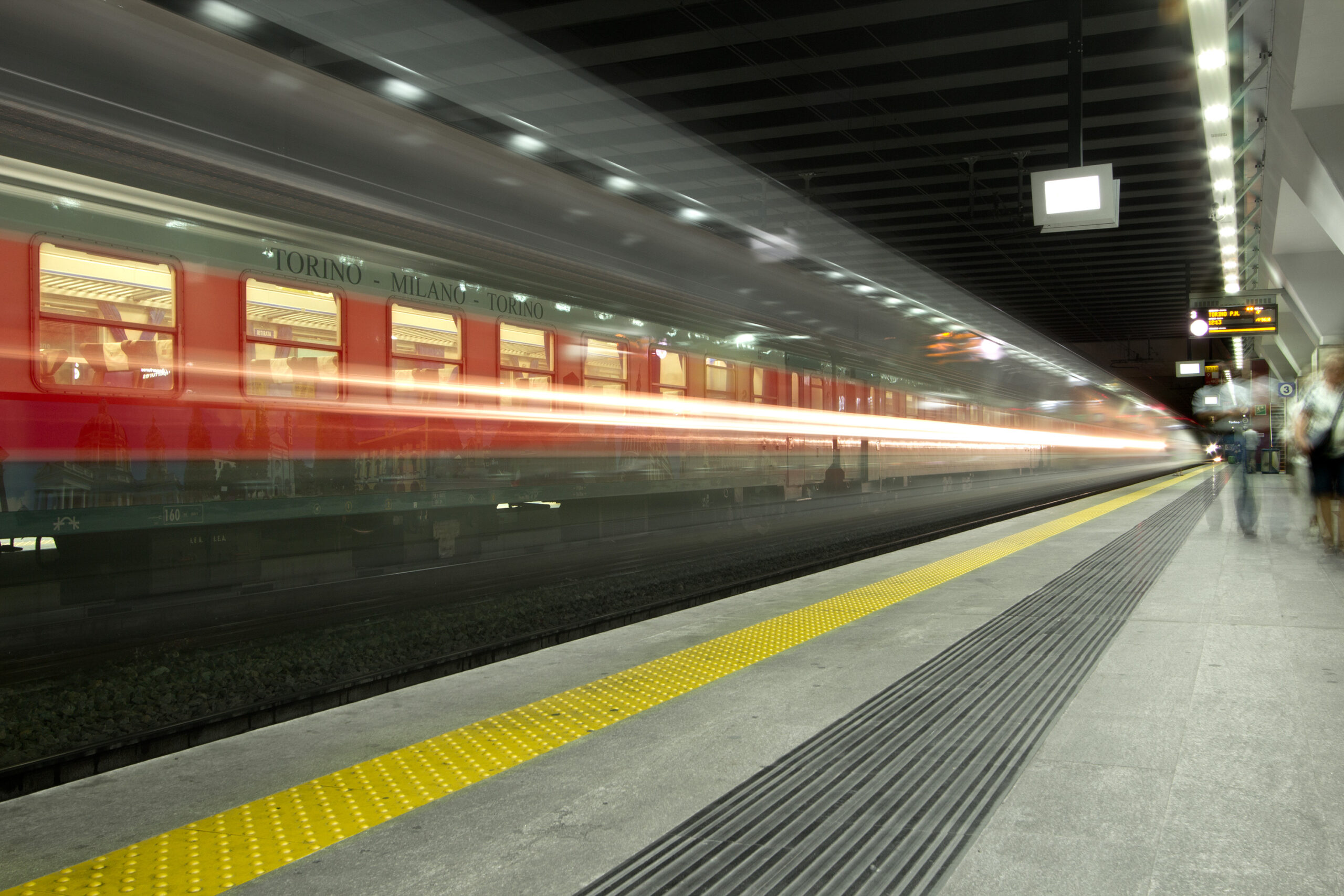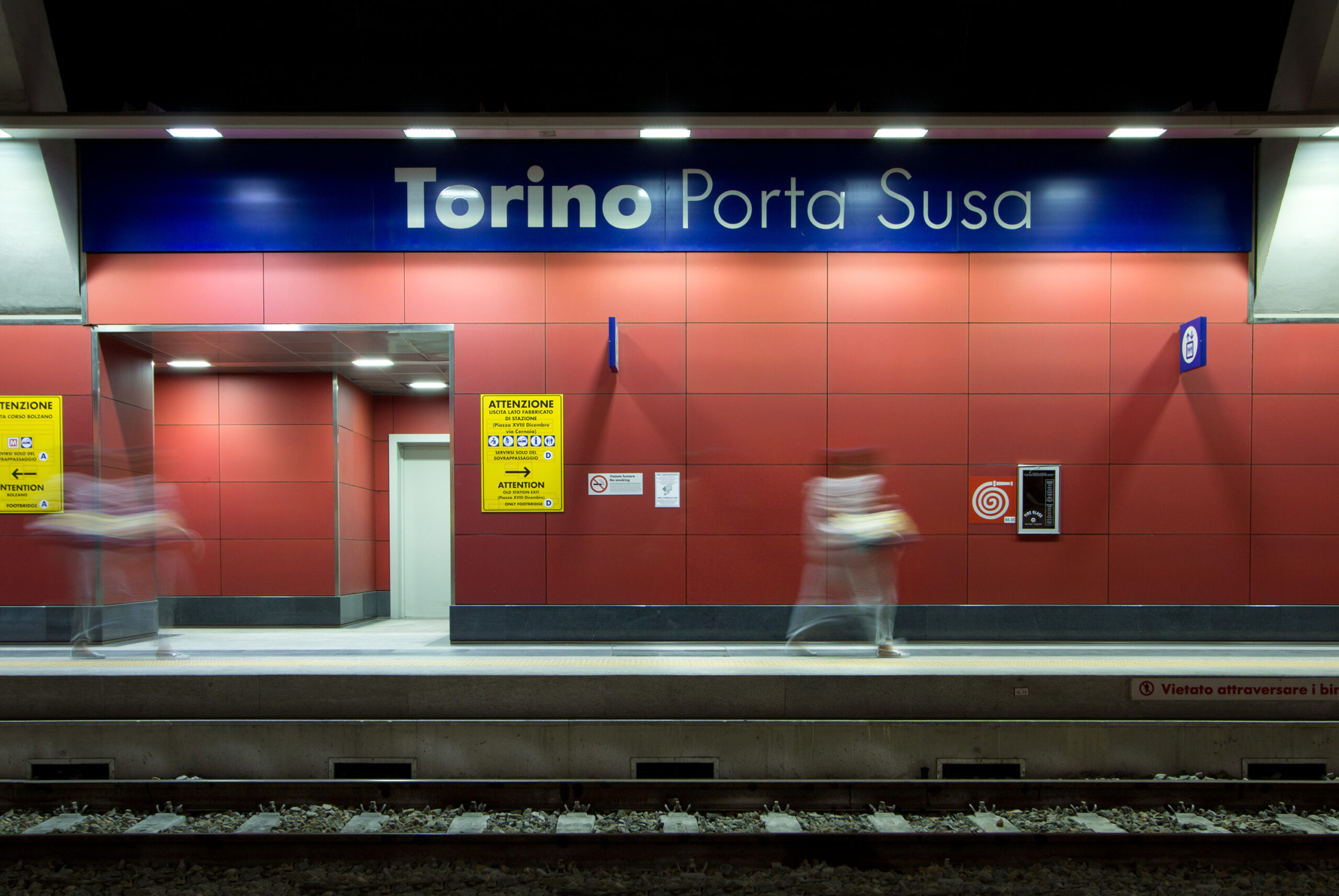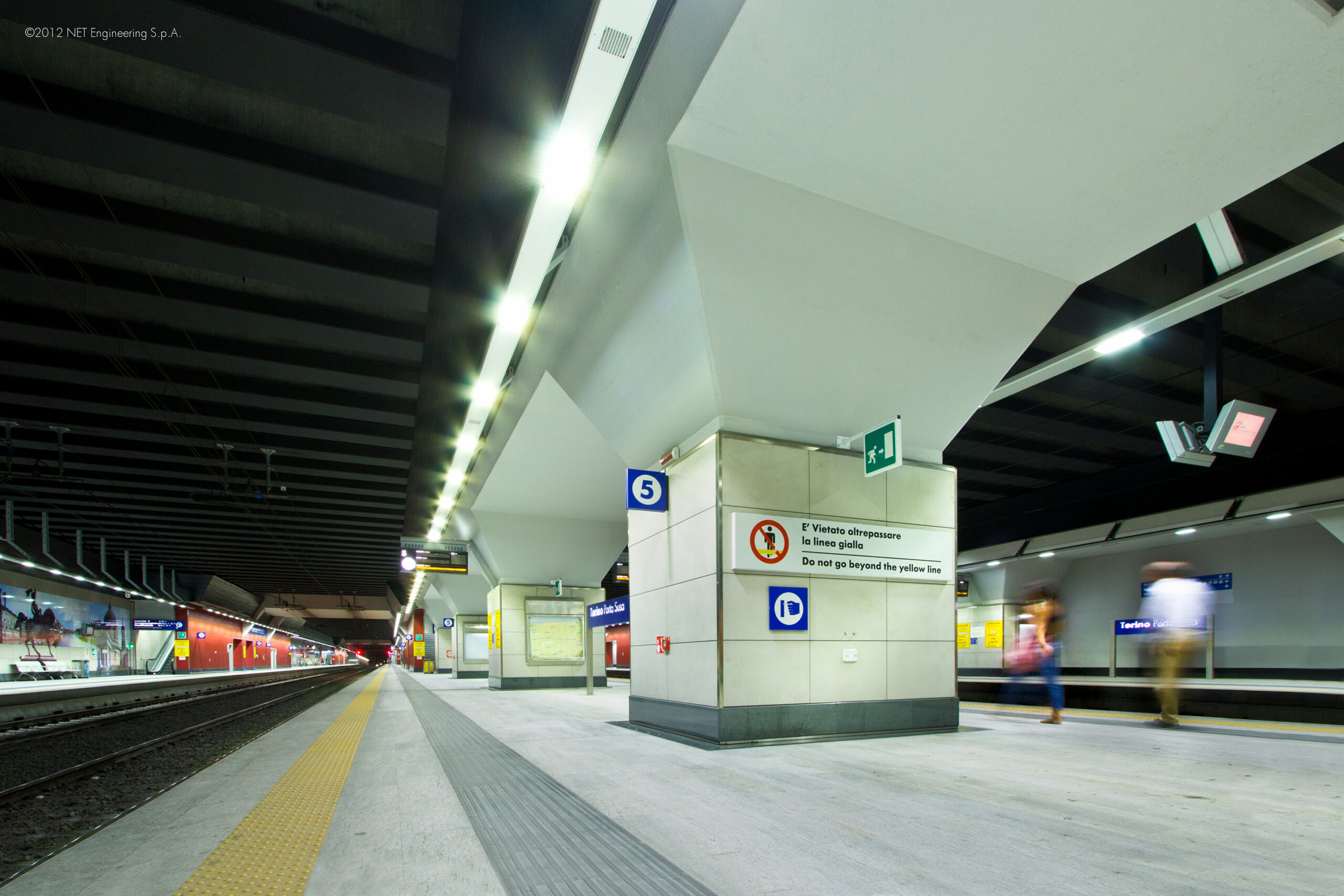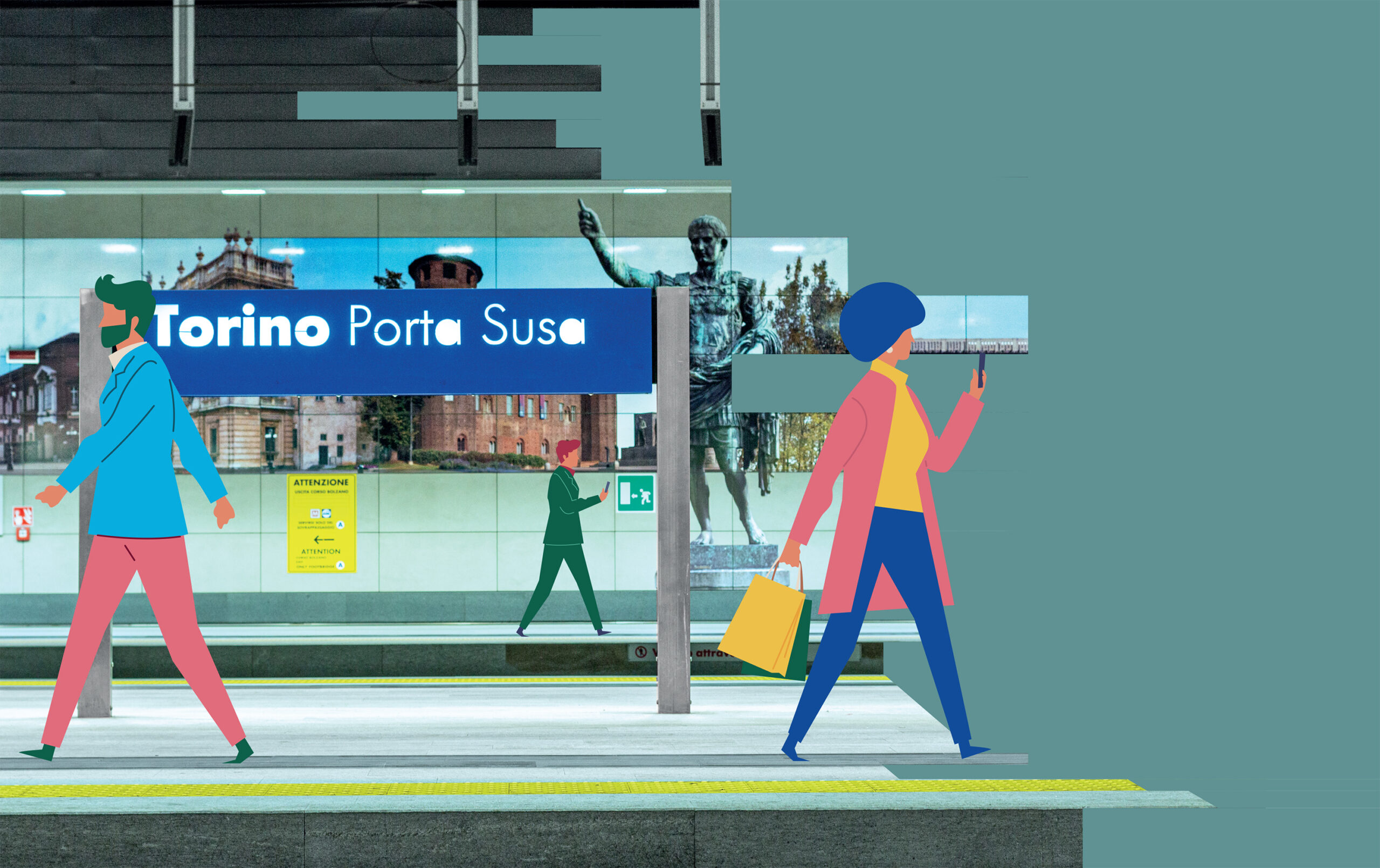The Turin rail link
Strengthening of transport and repair of the urban fabric
From the late 1970s, Turin has reflected deeply on its urban structure – the railway infrastructure, built when Turin was the capital of Italy and around which the city of the industrial boom developed, started to be seen as a separation. The railway line was increasingly perceived as a barrier, a functional and perceptual obstacle where abandoned areas and low quality architecture developed. It was in this context that the ambitious Rete Ferroviaria Italiana (RFI) project, for the quadrupling of the railway in the city centre, was conceived through the construction of an underground rail link between Lingotto in the south and Stura in the north. The project was a particularly difficult technical challenge, setting out up to four underground levels of flow but, at the same time, was the opportunity to build a new urban penetration route right in the city centre.

One project, two complementary results
In essence, the project had two main aims. Firstly, the strengthening of the railway junction (adding two lines and new stops) with a view to the new operation model of regional railway services and the entrance of the High Speed lines from the east (Turin-Venice) and west (Turin-Lyons); secondly, to seize the opportunity of putting the urban railway section underground and eliminating the physical separation of the city it generated, so that, overall, the areas previously penalised by the railway could be rejoined and redeveloped. The urban transformation also included targeted operations to fluidify road traffic through the elimination of road/railway level crossings and new sections of cycle paths and urban road on the surface, above the railway underground.
The technical challenge for the engineers was to design the works so that the railway circulation remained unchanged and there was as little interference as possible with road circulation, businesses and residents’ lives.
Therefore, the sequence of construction sites was divided into time portions small enough to analyse the accessibility conditions to each building at all times. This was done through the planning of suitable spaces and the temporary reorganisation of circulation directions in the various groups of streets behind the area of work. The analysis allowing the emergency services (ambulance, fire brigade and police/carabinieri) access to the front of all the buildings was particularly important.
The principle of dealing with the construction sites in the final project initially and then fully and in-depth in the working drawings was brought about by the, at the time, recent introduction of the legislation on the ‘practicable working drawings’, i.e. at a level of detail that leaves the contractor with no uncertainty or degrees of discretion.
Forecasting suitable spaces and temporary reorganization of traffic directions in the various blocks behind the work area.
This methodological line for the project has, over time, become a standard for NET Engineering, which has gradually refined it through the feedback heard during the management of works the company has designed.

The works design
NET Engineering developed the final detailed design of the northern section of the rail link, from the new station of Porta Susa, currently being completed, to the Corso Grosseto junction, and further the Stura area. The suggestions made for the Turin Rail Link project were the summary of a complex decision-making process. The activities planned the design of the following works:
The following actions are planned for the infrastructure projects:
- Two artificial tunnels side by side with a length of 4.5 km;
- An underground intersection building on two basement levels between the railway tunnels and the underground (Tube-style) railway;
- The new underground stations of Porta Susa and Rebaudengo;
- The stations of Dora (covered) and Stura (open);
- An avenue for the urban penetration al posto di the urban penetration boulevard (4.5 km);
- Two sewers 2.3 km long;
- The new bridge on two levels over the Dora Riparia, with three spans and an overall length of 42 metres;
- A road junction between Corso Grosseto and the by-pass for Caselle Airport;
- The urban redevelopment of the areas.
In addition, the project set out a meticulous environmental arrangement with specific, innovative design of particular furnishings such as the type of paving of the roads and pavements, differing according to the kind of road and built environment, the surfaces of the road ramps, elements recalling the stylistic features of the pre-existing architecture, lighting, soundproofing at the most critical areas, and planting and arrangement of green areas. The environmental arrangement was developed for both the final configuration of the works and the protection of the construction sites during the building work,
analysing different types of fencing with panelling and decorations and their precise application in the various places.
It can be seen how the urban structure was the result of the work necessary for the reorganisation and development of the potential of the revitalised urban spaces including the elimination/reduction of the disturbance caused to other infrastructures, at the same time thus ensuring the greatest use, availability and attraction.

A consideration
The Turin rail link project invites reasoning on the evolution of the role of the railway in urban centres. In the initial stage of building railway infrastructure in Italy, the station was often outside the urban agglomerate in suburban areas without buildings. However, the distance from the town centre progressively stimulated the construction of access roads, buildings for the work connected with transport services and those for travellers, and also residential buildings. The new urban fabric, generated by the station, therefore expanded until it joined the pre-existing historical one, causing these initially separate contexts to become ‘town’. As a result, the positive feeling of “being what is connecting towns” that the inhabitants of railway tracks experienced became progressively imbued with negative feelings of “being what is dividing the town”. At times, this became so marked that the previous, positive feeling, was cancelled. Today, there is a growing demand from town and country to put the railway ‘underground’ to solve urban planning and local mobility aspects and eliminate level crossings. However, the impact of such work is now enormous and the associated costs often discourage the idea of undertaking it.

